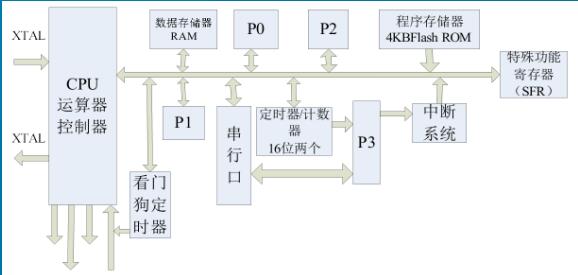The single-chip microcomputer is a kind of integrated circuit chip, which adopts super large-scale integrated circuit technology to integrate the central processing unit (CPU), random access memory (RAM), read-only memory (ROM), various IO ports, interrupt systems, and timing with data processing capabilities. The functions such as the device/counter (may also include display drive circuit, pulse width modulation circuit, analog multiplexer, AD converter, etc.) are integrated on a silicon chip to form a small and complete microcomputer system.
The single-chip microcomputer was born in 1971 and has experienced three stages: SCM, MCU, and SoC. The early SCM single-chip microcomputers were all 8-bit or 4-bit. One of the most successful is INTEL's 8051, after which the MCS51 series MCU system was developed on the 8051. The single-chip microcomputer has evolved from the 4-bit and 8-bit single-chip microcomputers in the 1980s. With the improvement of the requirements in the industrial control field, 16-bit single-chip microcomputers began to appear, and they have developed to high-speed single-chip microcomputers that run at a speed comparable to computer CPUs.
MCU classificationAs an important branch field of computer development, single-chip microcomputers can be roughly divided into general/special type, bus type/non-bus type and industrial control type/home appliance type from different perspectives according to the development situation.
General-purpose type: 80C51 type general-purpose single-chip microcomputer, which is not designed for a special purpose; special-purpose single-chip microcomputer is designed and produced for a type of product or even a certain product, for example, in order to meet the requirements of electronic thermometers, an ADC interface is integrated on the chip, etc. Functional temperature measurement control circuit.
Bus type: Bus type single-chip microcomputers are generally equipped with parallel address bus, data bus, and control bus. These pins are used to expand parallel peripheral devices and can be connected to the single-chip microcomputer through the serial port. In addition, many single-chip microcomputers have integrated the required peripheral devices and The peripheral interface is integrated in a single chip, so in many cases it is not necessary to extend the bus in parallel, which greatly reduces the packaging cost and chip volume. This type of microcontroller is called a non-bus type microcontroller.
Control type: The general industrial control type has a large addressing range and strong computing power; most of the single-chip microcomputers used in home appliances are special-purpose, usually small packages, low prices, and high integration of peripheral devices and peripheral interfaces. Obviously, the above classification is not unique and strict. For example, 80C51 type single-chip microcomputer is both general-purpose and bus-type, and can also be used for industrial control.
The basic structure of the microcontrollerThe arithmetic unit is composed of arithmetic logic unit, accumulator and register.
The calculator has two functions:
(1) Perform various arithmetic operations.
(2) Perform various logic operations and conduct logic tests, such as zero value test or comparison of two values.
The controller is composed of a program counter, an instruction register, an instruction decoder, a timing generator, and an operation controller. Its main functions are:
(1) Take an instruction from the memory and point out the location of the next instruction in the memory.
(2) Decode and test instructions, and generate corresponding operation control signals to facilitate the execution of prescribed actions.
(3) Command and control the direction of data flow between CPU, memory and input and output devices.
Main register

(1) Accumulator A
(2) Data register DR
(3) Instruction register IR and instruction decoder ID
(4) Program counter PC
(5) Address register AR
Rotary Switch
Main band switch characteristics as below:
- Providing different rotation angles degree for options.
- Including multiple output digital coding modes.
- Including inhibit and parity signal to avoid error.
- Water and oil resistance. (IP65)
- Gold plating double contact points, stable contact resistance, long service life.
- Easy installation
Band Switch,Rotary Type Band Switch,Cnc Panel Band Switch,Rotary Band Switch
Feyvan Electronics Technology Co., Ltd. , https://www.fv-cable-assembly.com